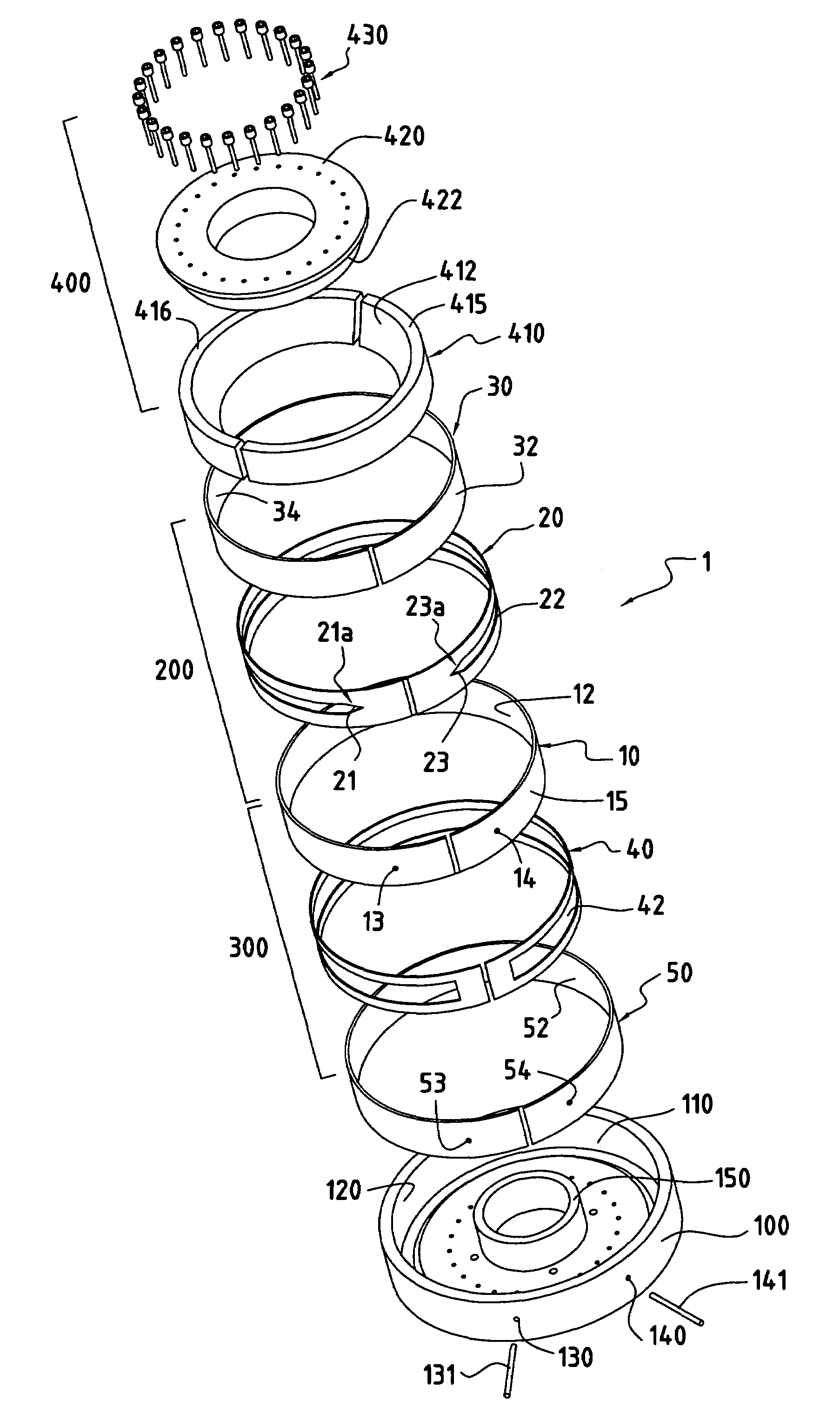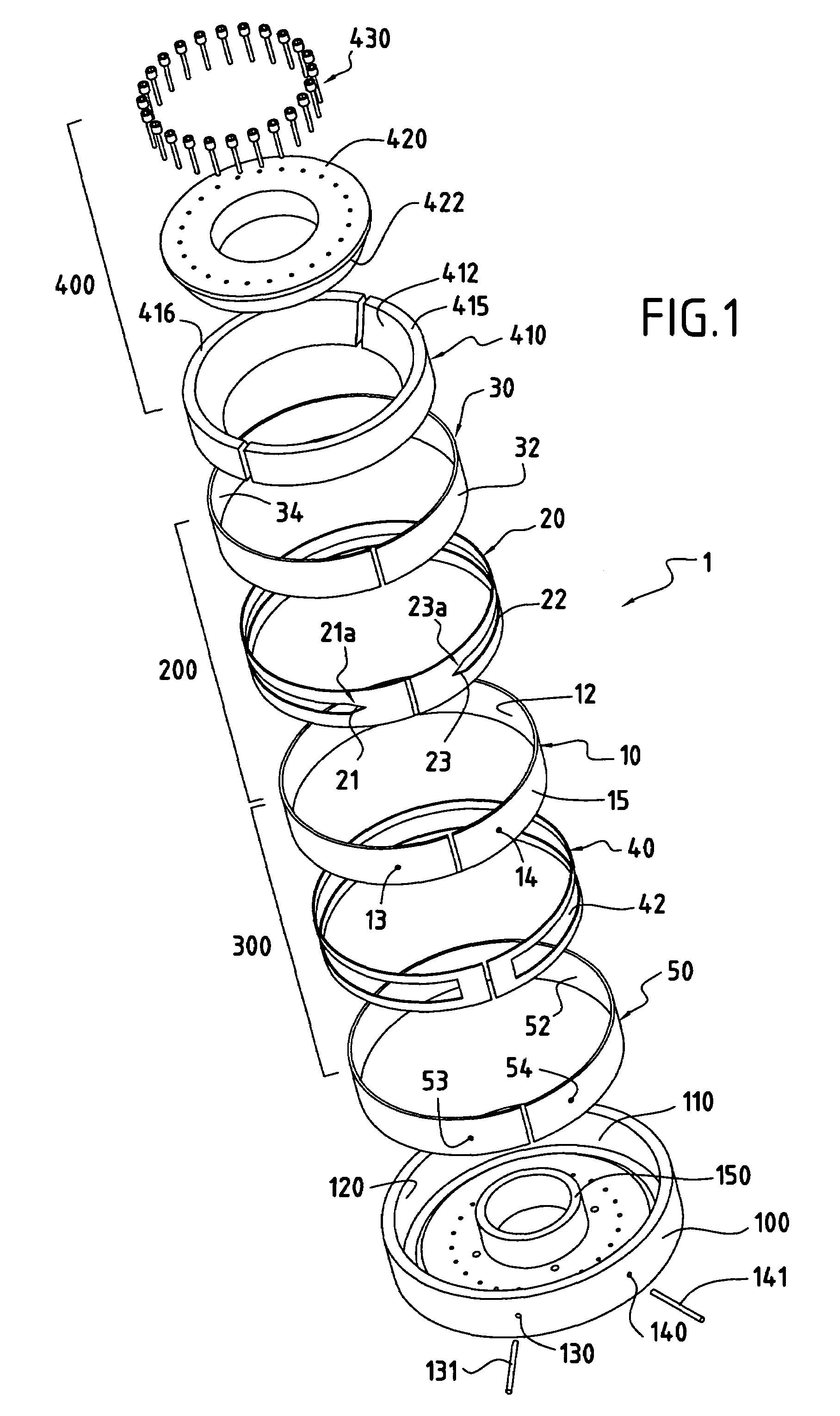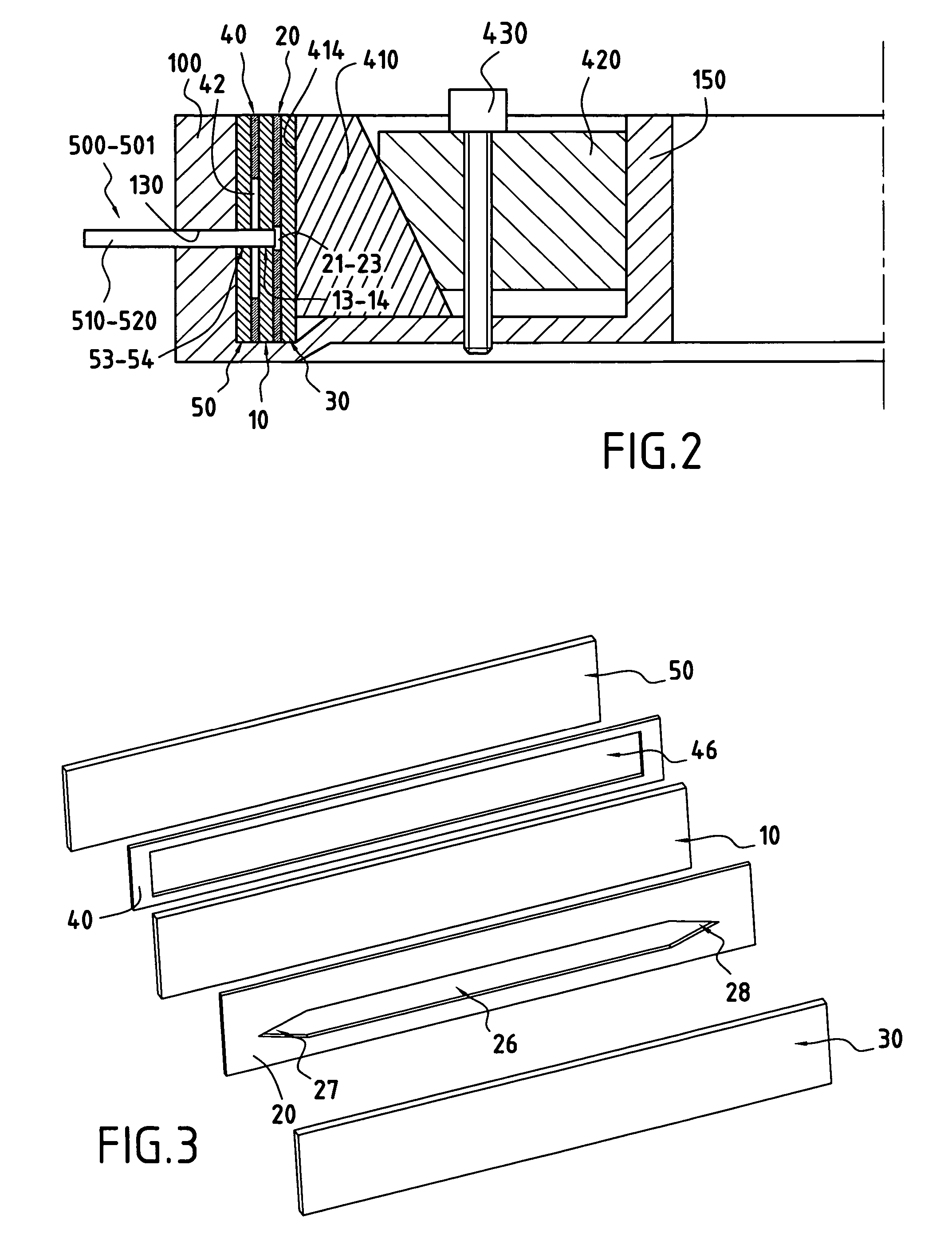Separation device comprising a separation channel and a counter-channel
a separation device and counter-channel technology, which is applied in sedimentation separation, centrifugal force sediment separation, biomass after-treatment, etc., can solve the problems of unreproducible separation of suspended substances, devices that have encountered the same problems, and do not allow proper utilization of separation, so as to achieve convenient disassembly and great flexibility in use
- Summary
- Abstract
- Description
- Claims
- Application Information
AI Technical Summary
Benefits of technology
Problems solved by technology
Method used
Image
Examples
example 1
Example of a Procedure for Checking the Volume of the Separation Channel of the Device According to the Present Invention
[0105]The following procedure is carried out in order to check the volume of the separation channel, notably to know whether the separation channel has an annular geometrical shape with a rectangular section which has not undergone any deformation during the tightening of the components forming the channel and the counter-channel.
[0106]Once the dimensions of the separation channel have been selected by cut-out from a mylar sheet and the dimensions of the counter-channel have been selected from a mylar sheet, both of these sheets are inserted as indicated in reference with FIGS. 1-7 in order to form the second and fourth mounting components against polystyrene sheets which form the first, third and fifth mounting components.
[0107]The volume of the separation channel is checked by injecting acetone via a HPLC injector.
[0108]When the separation channel is properly f...
example 2
Cell Sorting of Cells with the Device According to the Present Invention
[0113]It is possible to separate cells under the following conditions:
[0114]the separation channel is made with two polystyrene strips of dimensions 870×30×2 mm, separated by a Mylar® strip in which the channel has been cut out. The dimensions of the channel were 685×10×0.125 mm with V-shaped ends of 70 mm.
[0115]The dead volume (volume of the channel+tube connection+injection system+detection system) was 960±5 μL. The dead volume was calculated after injection of the unretained compound (water with 0.1 g / L of benzoic acid) and the retention time was determined by UV detection at 254 nm (the wavelength is adapted according to the cells to be detected). The PEEK® inlet and outlet tubes with ID of 0.254 mm were directly flush with the accumulation wall. The strips of polystyrenes and mylar were fixed in the centrifugation casing as described with reference to the figures. The distance axis of rotation-channel was ...
example 3
Another Example of Separation of a Suspension of a Cell Line with the Device According to the Present Invention
[0120]The elution conditions were those of example 2 except for the following:
[0121]dimensions of the channel: 780×10×0.125 mm;
[0122]dimensions of the counter-channel: 780×10×0.135 mm injection of 100 microliters of cells (107 cells / mL);
[0123]flow rate: 0.60 mL / min;
[0124]mobile phase: sterile. PBS, pH=7.4 with 0.1% (w / v) BSA;
[0125]multi-gravitational external field=40.00 g±0.01 g;
[0126]detection by spectrophotometry at λ=254 nm.
[0127]Thus, it was possible to obtain different fractions of a cell line, so that present cells at different maturation stages could be separated.
PUM
| Property | Measurement | Unit |
|---|---|---|
| thickness | aaaaa | aaaaa |
| thickness | aaaaa | aaaaa |
| thickness | aaaaa | aaaaa |
Abstract
Description
Claims
Application Information
 Login to View More
Login to View More - R&D
- Intellectual Property
- Life Sciences
- Materials
- Tech Scout
- Unparalleled Data Quality
- Higher Quality Content
- 60% Fewer Hallucinations
Browse by: Latest US Patents, China's latest patents, Technical Efficacy Thesaurus, Application Domain, Technology Topic, Popular Technical Reports.
© 2025 PatSnap. All rights reserved.Legal|Privacy policy|Modern Slavery Act Transparency Statement|Sitemap|About US| Contact US: help@patsnap.com



